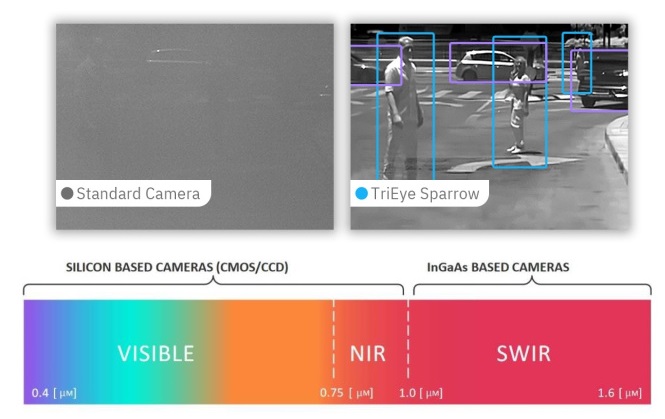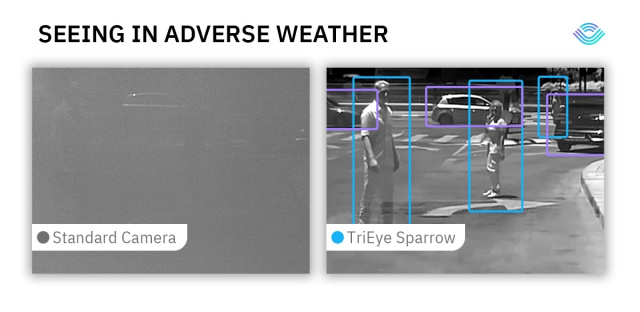@AutomotiveRu - auto industry news, hardware and driving psychology
@TeslaHackers - community of Russian Tesla hackers, rental and drift training on Tesla

Vehicles that can drive anywhere, in all weather or road conditions, are the dream of the unmanned transport industry. To one degree or another, modern automakers are capable of creating such vehicles. However, now and in the foreseeable future, no company guarantees the universality of its solution.
Modern unmanned vehicles have many limitations. Robo-taxis, for example, can only work on parcels. limited to geofences. The rollout of robo-taxi services is taking place gradually, " one city at a time ," said Egil Juliussen.
Similarly, safety experts believe that the ODD (Operational Design Domain) is critical to the safety of automotive vehicles. ODD is "a model of the conditions that self-driving cars will deal with," explained Phil Koopman, CTO at Edge Case Research. In the real world, however, "despite the best efforts of the designers," autonomous vehicles can always be outside the scope of their ODD, he cautioned.
“So if ODD is a Desert Las Vegas, then the system could be designed mainly for dry weather or perhaps light rain,” Koopman said. “But actually in Vegas it rains from time to time, and sometimes even snow. On the day it snows, the car will be outside its ODD. ”
TriEye Announces SWIR Cameras
TriEye is a Tel Aviv developer of SWIR technology. The company says its top priority is to tackle the low visibility issues that the automotive industry has to contend with.

TriEye announced last week that Denso, a $ 47.6 billion Japanese tier 1 company, is evaluating Sparrow, a TriEye engineering prototype built with SWIR technology. Earlier this year, TriEye also announced its relationship with Porsche .
Given that TriEye is not exactly announcing the victory for Denso's design, it is not clear what TriEye meant by "Denso's rating."
Ziv Livne, vice president of business development at TriEye, told the EE Times the following: “Unfortunately, we are not allowed to disclose further information regarding the collaboration and evaluation process, except as mentioned in the announcement. TriEye and Denso share a vision of improving road safety by bringing the most advanced technologies to market, and we look forward to bringing these ideas to life. "
But the ability to publicly name names (talking about Denso company names) adds credibility to TriEye's development efforts. In its press release, TriEye implies that the partnership with Denso includes learning from Denso's experience in the marketplace, as well as taking their "innovative approach".
Core technology
Recently, more and more companies are considering using infrared cameras in a suite of sensors in their self-driving vehicles - in large part because vehicles need to be able to see in the dark.
TriEye uses the unique physical properties of the shortwave infrared spectrum. Since this spectrum can detect a unique spectral characteristic inherent in the chemical and physical characteristics of each material, TriEye claims that their devices can not only see objects in any weather conditions and under different lighting conditions, but also pre-identify road hazards (for example, ice).

The world has known the benefits of shortwave infrared for decades, in particular through the use of SWIR cameras in the military and aerospace industries. However, this technology has not been introduced to the mass market due to the extremely high cost of indium gallium arsenide (InGaAs) required to create such devices. However, TriEye claims to have found a way to create a SWIR camera using CMOS technology .
Last fall in an interview with EE Times Avi Bakal(Avi Bakal), CEO and Co-founder of TriEye, told us about this: “We've made a breakthrough. As with semiconductors, we have been using CMOS for high volume production of SWIR cameras from day one. ” Bakal also said that "compared to an InGaAs sensor costing more than $ 8,000, the TriEye camera will be offered 'for tens of dollars.'
Potential Applications
Despite the fact that the startup is generally focused on ADAS, TriEye also seems ready to go beyond the automotive industry.
In a recent press release, TriEye noted that “it has already delivered Sparrow samples to its non-automotive customers, which allows them to take advantage of the SWIR technology in TriEye products to go beyond the visible and solve complex industry problems.” However, the company did not clarify which applications are compatible with its SWIR cameras.
Raven Production Plans
TriEye hopes to solve low visibility problems on the road by bringing affordable, affordable SWIR cameras to the global mass market. While the Sparrow has been described as a "milestone", the mass market will have to wait a while - the Sparrow remains an engineering model. According to Livne, TriEye's real ace is the upcoming TriEye Raven, which TriEye calls "the world's first CMOS-based HD SWIR camera."
Compared to the engineering reference Sparrow, the Raven offers "a higher resolution (1280x960) and five times the size (3x3x2.5cm excluding the lens)," explains Livne. According to him, this will provide ease and flexibility of integration. Raven is slated for release later this year.

Images shot with a TriEye Sparrow camera (right) and a standard camera, adverse conditions were created using a smoke machine. (Source: TriEye)
Competition
Companies with IR technology are moving towards the automotive market. But IR systems come in many forms.
For example, Flir, a leading provider of thermal infrared cameras, explains :
Active IR systems use shortwave infrared radiation to illuminate a region of interest. Part of the infrared energy is reflected back to the camera and interpreted to produce an image. Thermal imaging systems use medium or long wavelength infrared radiation. Thermal imagers are passive and only sense temperature differences. These heat signatures (usually black (cold) and white (hot)) are displayed on the monitor. Since thermal imagers operate in longer infrared ranges than an active IR emitter, they do not perceive reflected light and are therefore not affected by oncoming headlights, smoke, fog, dust, etc.
Then how do you compare SWIR to thermal imaging cameras?
Livne from TriEye noted that “the thermal imaging camera is based on a bolometric sensor that measures heat, while SWIR is based on the photodiode effect, like a standard camera. Unlike a thermal camera, which provides thermal imaging, a SWIR camera displays the same images as a standard camera. ”
Regarding the implementation of SWIR cameras, Livne argued that "SWIR cameras can be placed behind glass (windshield, headlights, etc.), but thermal imaging cameras cannot."
He added that "thermal imaging cameras cannot use existing computer vision algorithms, so their work requires millions of datasets to create new deep learning models."
Last year, TriEye completed a $ 19 million Series A funding round (led by Intel Capital) with Porsche Ventures and Grove Ventures, and TriEye is working closely with Porsche AG.

About ITELMA
Read more helpful articles:
- Free Online Courses in Automotive, Aerospace, Robotics, and Engineering (50+)
- [Forecast] Transport of the future ( short-term , medium-term , long-term horizons)
- The best materials on hacking cars from DEF CON 2018-2019
- [Forecast] Motornet - data exchange network for robotic transport
- Companies spent $ 16 billion on self-driving cars to capture $ 8 trillion market
- Cameras or lasers
- Autonomous cars on open source
- McKinsey: automotive
- …